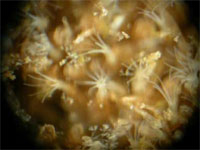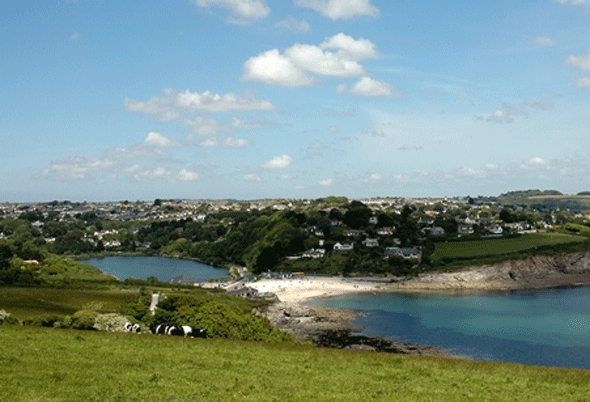
Brackish lake habitats are rare in Britain. They support different plants and animals to those of freshwater lakes. What is more, Swanpool is unique because it is home to an animal that has not been found living anywhere else in Britain - the trembling sea mat.
- While it looks like a plant, the trembling sea mat belongs to a group of primitive animals called bryozoa.
- Each bryozoan is only one or two millimetres in size.
- They live underwater, in colonies, attached to plant stema or stones.
- They feed using a crown of tentacles covered in tiny hairs that catch food from the water - this is known as filter feeding.
Why is Swanpool the only place in Britain where the trembling sea mat can be found? The balance of salt and water in the pool provides perfect conditions. Indeed, any significant changes to the salinity may threaten this remarkable animal.
More than a hundred bird species have been seen at Swanpool. Mallard are found at the pool all year while moorhen, coot and little grebe are regular visitors. In summer you may hear coots squabbling noisily over territory.
In winter a small flock of tufted ducks visits the pool for several months. You can identify the males by their black and white plumage and tuft at the back of the head. You may see the tufted ducks diving for up to 20 seconds at a time to collect their food from the pool's muddy bottom.
To the northwest, dense grey willow and alderwoodland provides habitat for other birds. If you are quiet, and lucky, you may spot the shy brown water rail, small flocks of siskin feeding in the alders, or even the bright blue flash of a kingfisher.
Swanpool has abundant plant life. The wetter margins of the wood are home to the brightly coloured yellow flag iris, Cornish moneywort, greater tussock sedge, Lady's smock. In the shallower, saltier areas the pool is fringed with reed beds and sea club-rush.
At its deepest Swanpool is 2.5m. On a high tide fish are able to enter the pool through the culvert and the brackish waters support a variety of species.


In 1826 a culvert was dug through the bar draining much of the lake into the sea and leaving the water level that you see today. Water still drains out of Swanpool through the culvert at the southern end, however, at high spring tides sea water rises above the culvert and flows back into Swanpool. As a result the lake is now brackish - a mixture of salty and fresh water.


Swanpool is a Local Nature Reserve and a Site of Special Scientific Interest (SSSI). It is managed by the Swanpool Forum which includes the following people;
Pete Lochrie of Swanpool Beach - Chairman and Treasurer
David Yelland of Falmouth Bay Residents Association - Secretary
Peter Hartley of Falmouth Model Boat Club
Beth Tonkin of Natural England
Bob Eldridge of Marlborough School
Donald Martin of Cornwall Council
and two volunteer wardens Malcom Brain and Gary Thomson
For more information on the Swanpool Management forum click here.
Swanpool's delicate balance is under threat from:
- Increasing nutrient levels from agricultural run-off and domestic detergents.
- Pollution from urban run-off caused by the density of nearby housing development.
- Deliberate introduction of non-native animal species, such as terrapins, to the pool.
- Spread of non-native plant species such as Japanese knotweed, through dumping of garden waste in the area.
- Be careful to avoid disturbing wildlife.
- Don't go near nesting birds - keep to the paths.
- Don't release animals like terrapins into the wild. They are not native to Britain and introducing them causes problems for other species in the pool.
- Don't dump garden waste in the area - compost at home, or contact the Carrick recycling helpline: 01872 224 379
- Please take all rubbish home with you.
